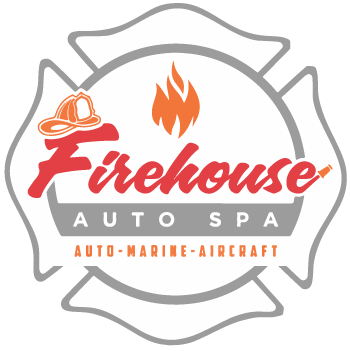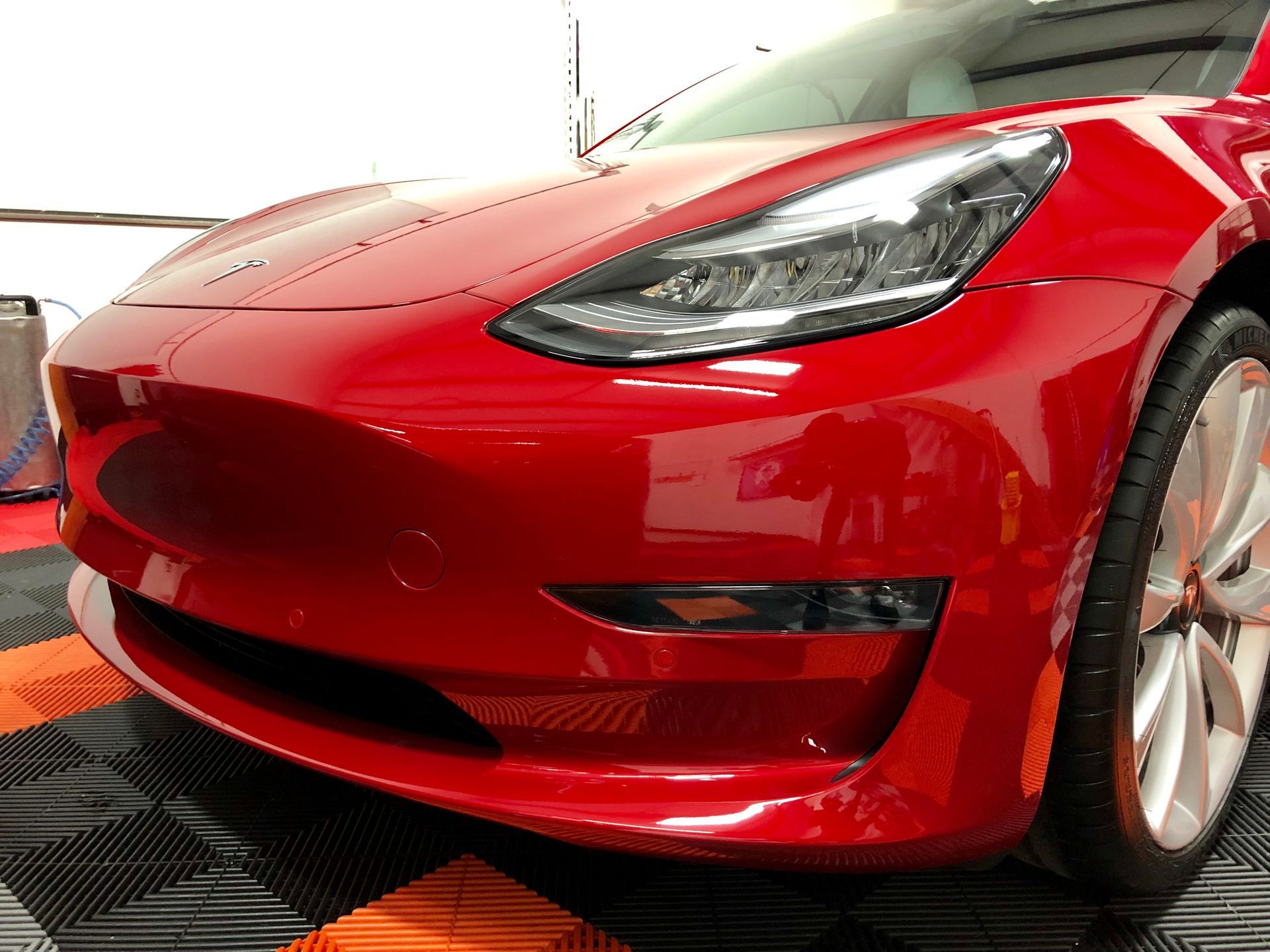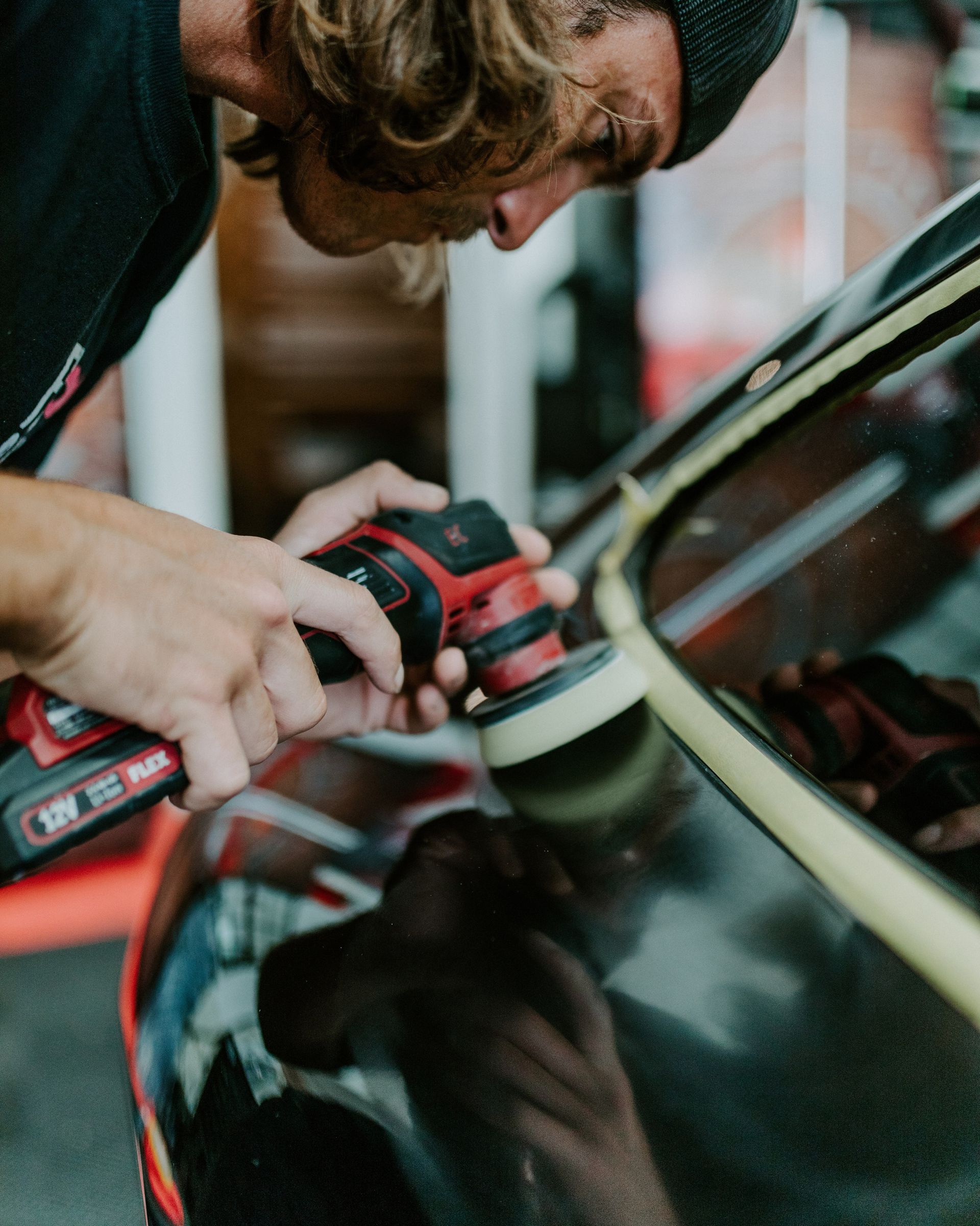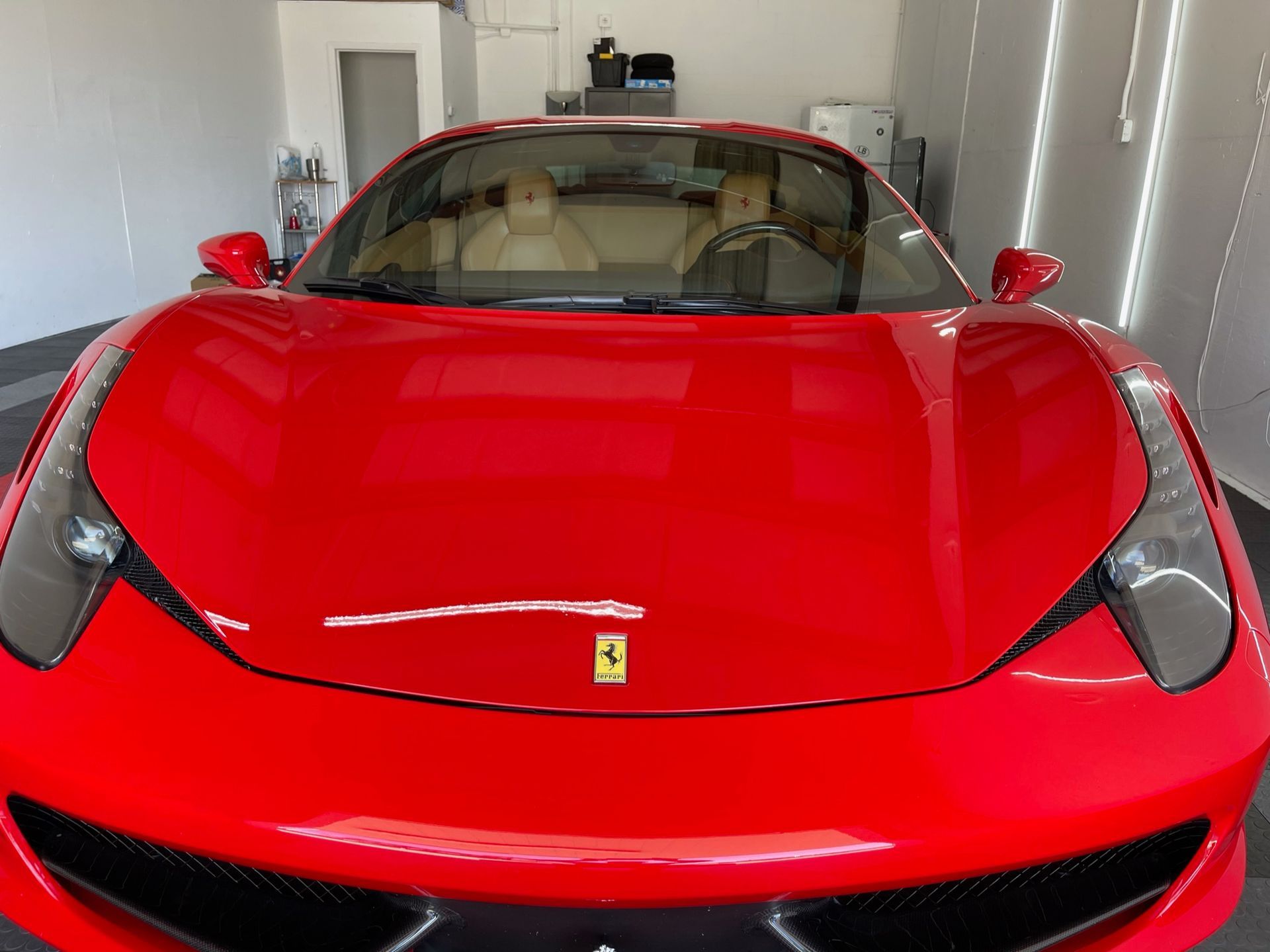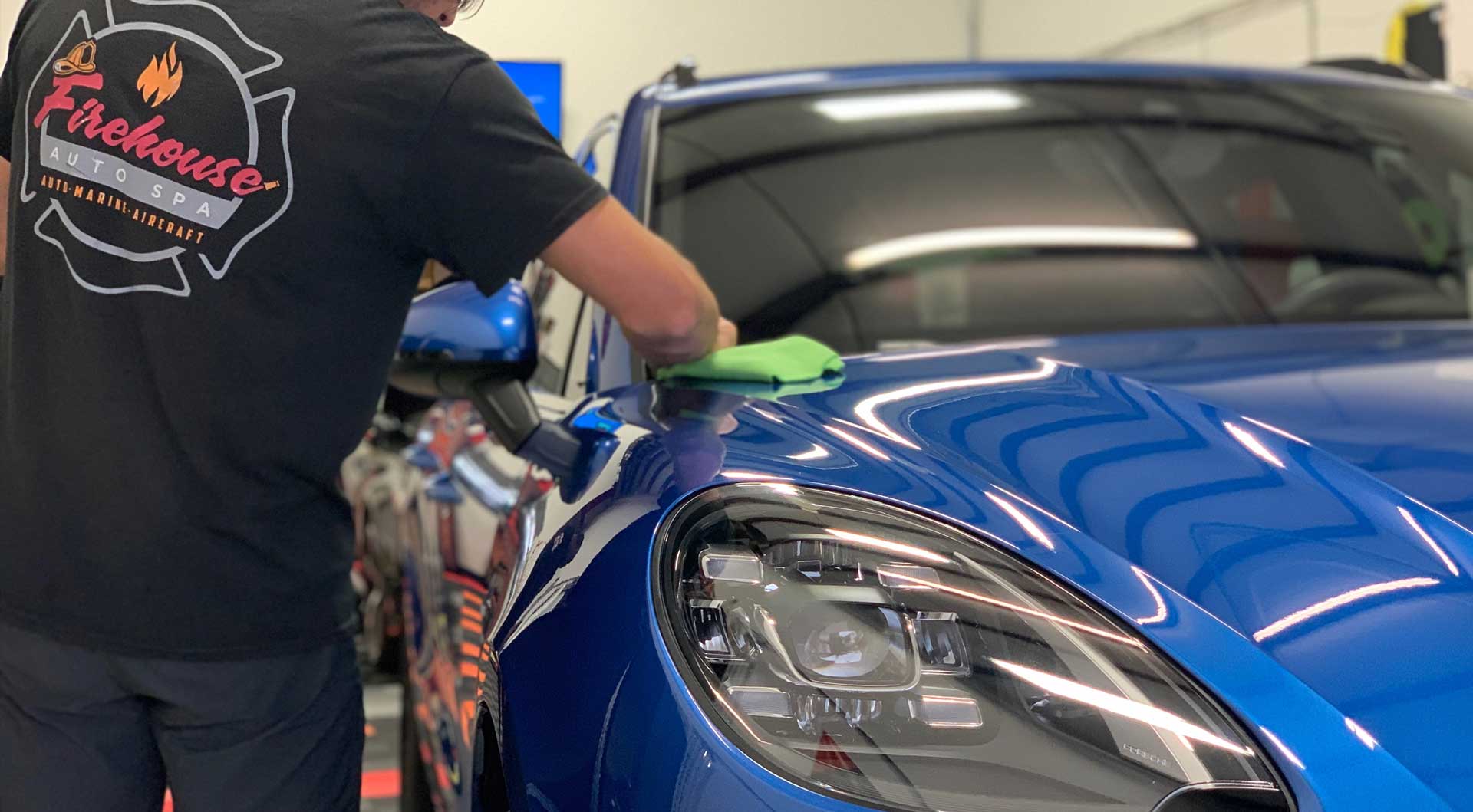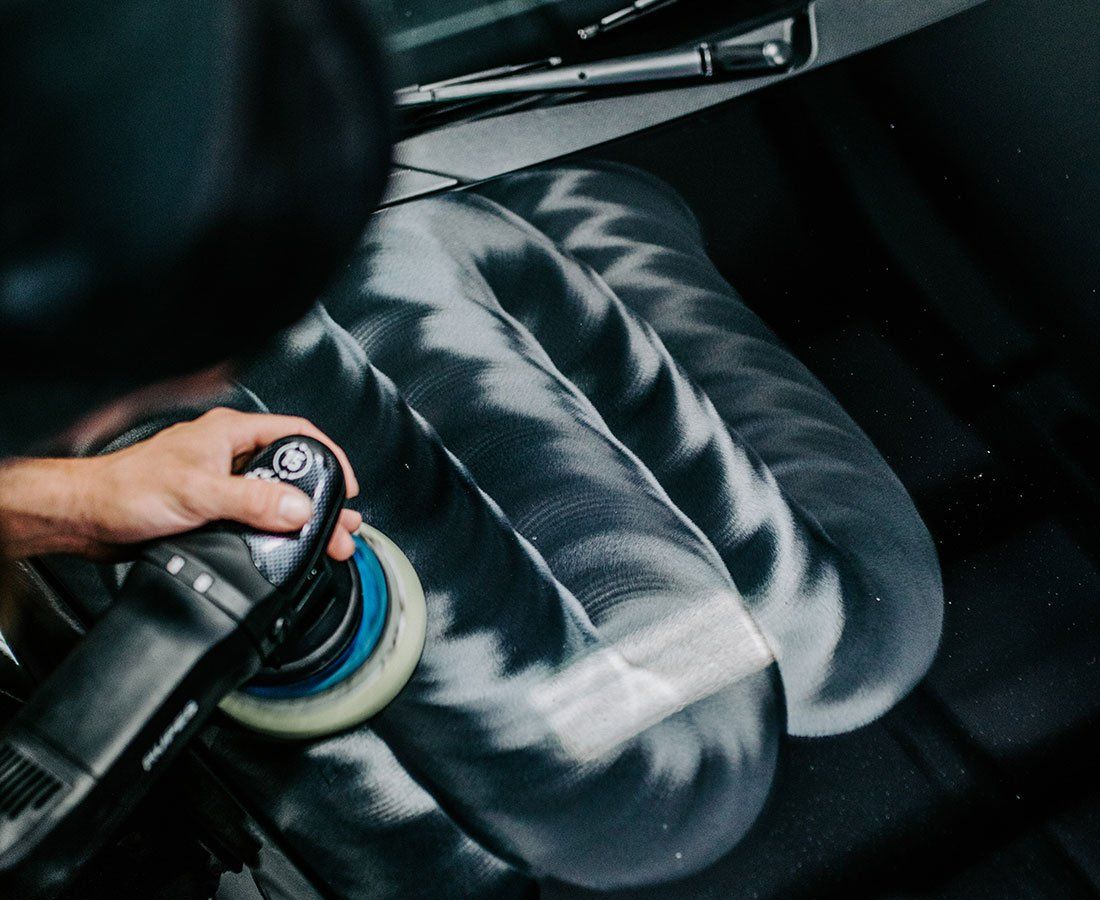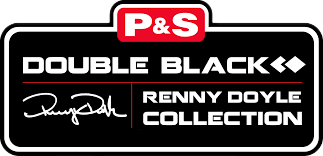PPF vs. Ceramic Coating: Choosing the Right Protection Option for Your Vehicle
Choosing between paint protection film and ceramic coating can be challenging, as both offer distinct benefits suited to different needs. Each option provides valuable protection for your vehicle’s finish—whether you're prioritizing defense against physical damage or long-term surface enhancement. Understanding the differences is key to selecting the right solution for your lifestyle and driving conditions.
The primary difference between paint protection film and ceramic coating lies in their protective capabilities; PPF provides a thicker layer of physical protection against chips and scratches, while ceramic coating offers enhanced chemical resistance and hydrophobic properties. To determine the right option for your vehicle, consider factors such as your driving habits, the level of protection needed, and your budget—many enthusiasts choose to combine both for optimal results.
PPF vs. Coating: A Protective Comparison
Paint protection film serves as a durable physical barrier for your vehicle, specifically engineered to absorb impacts from road debris, small rocks, and other abrasive elements. This transparent urethane film protects high-risk areas like the front bumper, hood, and side mirrors—spots most prone to chips and scratches. One of its most notable features is its self-healing capability, which allows minor scratches to disappear with heat exposure, preserving the car’s flawless appearance. While it’s particularly beneficial for drivers navigating gravel roads or high-traffic areas, PPF is also ideal for anyone looking to maintain the structural integrity of their vehicle’s paint over time.
Ceramic coating offers a different kind of protection by enhancing the vehicle’s surface at a chemical level. This liquid polymer forms a permanent bond with the paint, creating a hydrophobic layer that repels water, dirt, and grime. As a result, cleaning becomes easier, and the risk of water spots or stains is significantly reduced. Additionally, ceramic coating protects against UV rays, which can cause fading and oxidation. Though it doesn’t guard against physical impacts, its ability to preserve gloss and prevent environmental damage makes it an excellent option for drivers who want lasting shine with minimal upkeep.
For the most comprehensive protection, many car owners choose to combine both solutions—applying PPF to impact-prone areas like the hood and fenders, then layering a ceramic coating over the entire vehicle. This approach delivers the physical protection of PPF along with the long-term environmental resistance of ceramic coating. The result is a finish that’s not only well-defended against scratches and chips but also easier to clean and better protected against the elements, offering a complete defense without sacrificing visual appeal.
Understanding Paint Protection Film
PPF is crafted specifically to absorb impacts, providing excellent protection for high-contact areas on your vehicle. Think of places like the front bumper, hood, and side mirrors—these surfaces face a barrage of road debris, making them prime candidates for damage. Polyurethane or a polymer blend, known for its durability and flexibility, typically composes the film itself. This material allows PPF to conform seamlessly to the contours of your vehicle without showing unsightly seams, enhancing both protection and aesthetics.
- Self-Healing Properties: One of the most impressive features of PPF is its self-healing capability. Imagine this: minor abrasions and scratches you might accumulate from everyday wear actually disappear when exposed to heat. That could be sunlight during a summer drive or even the warmth from a heat gun applied selectively. This unique property means that your car retains its fresh look over time, saving you both time and potential restoration costs associated with surface blemishes.
- Costs and Installation: To ensure quality application, it's important to factor in the investment required for professional installation. The total cost for applying PPF can range anywhere from $2,000 to $7,000 based on how much coverage you choose and the make of your vehicle. For many car enthusiasts, this upfront cost is balanced out by long-term savings from reducing paint damage due to chips, scratches, and environmental elements.
With these insights about PPF laid out clearly, it's vital to turn our attention to how these benefits compare with another protective option available for vehicles.
Exploring Ceramic Coating
Ceramic Coating is changing the way car enthusiasts think about vehicle care. Unlike traditional waxes or sealants that sit on top of the paint, ceramic coating forms a rigid, glass-like shell that binds chemically with your vehicle's surface. This bond provides exceptional protection against various contaminants and creates a slick finish that keeps your car looking pristine.
- Hydrophobic Properties: One of the most alluring features of Ceramic Coating is its hydrophobic properties. When treated with this coating, water droplets bead up on the surface and roll away without leaving unsightly water spots behind. It’s like giving your car an invisible shield. For example, countless users report needing fewer washes thanks to this easy-clean quality; dirt doesn’t cling as easily, leading to less scrubbing and more driving!
- UV Protection: In addition to its hydrophobic qualities, Ceramic Coatings offer outstanding UV protection. Sunlight can significantly damage exposed paint, leading to oxidation and fading over time. However, a good-quality ceramic coating acts like sunscreen for your vehicle, keeping its paint vibrant and intact even in direct sunlight or harsh weather conditions. This feature is particularly advantageous for those living in sunnier areas where prolonged exposure is common.
- Maintenance: While ceramic coating reduces the need for frequent washing, it’s not maintenance-free. To retain its performance and finish, regular upkeep is still necessary. This includes using pH-balanced shampoos, avoiding abrasive tools, and occasionally applying ceramic-safe boosters to extend its hydrophobic and protective qualities. Proper care ensures the coating continues to perform at its best over time.
Ceramic Coating offers a sleek, durable layer of protection that keeps your vehicle cleaner, shinier, and better protected with less effort. It's a smart, long-term solution for drivers who want lasting results without constant upkeep.
Pros and Cons of Each Option
Every car owner must consider the unique pros and cons of paint protection film and ceramic coating to determine which fits their needs. While both options provide valuable protection, they serve distinct purposes and come with their own set of benefits and drawbacks that can affect your choice based on driving habits, climate, and overall vehicle usage.
Pros of PPF
- Exceptional protection against physical damage: PPF acts as a physical barrier between your vehicle's paint and the elements. It’s especially beneficial for those driving in high-risk areas—such as highways with flying debris, gravel roads, or near construction zones—where rock chips, scratches, and abrasions are common. This thick, durable film absorbs the impact that would otherwise damage your paint.
- Self-healing properties for minor scratches: One of the most innovative features of modern PPF is its self-healing technology. When the film sustains minor scratches or swirl marks, heat from the sun or a warm water rinse activates its restorative properties. Over time, these imperfections fade, keeping your vehicle looking smooth and well-maintained with minimal intervention.
- Removable without damaging the paint: Unlike permanent coatings, PPF can be safely removed by professionals without causing harm to your original factory paint. This is a huge plus for car enthusiasts who like to refresh or change their vehicle’s aesthetic without compromising resale value or repainting costs. It gives flexibility to update protection or aesthetics whenever desired.
Cons of PPF
- Higher initial cost: Professional installation of PPF can be a significant upfront investment, typically ranging from $2,000 to $10,000 depending on the vehicle's size and how much of it is covered. Though the long-term benefits can justify the cost, it may be a barrier for budget-conscious owners or those only seeking minimal coverage.
- Potential for visible edges or seams: If not installed with precision, PPF may show visible seams or edges—especially around complex curves or tight body panels. These lines can be distracting and may slightly disrupt the clean visual flow of the car’s surface, particularly for those with an eye for flawless detailing.
- Can yellow over time: Despite UV-resistant advancements, some PPF materials may yellow after years of sun exposure, especially on white or light-colored vehicles. Although this discoloration appears slowly, it can impact the uniformity of the vehicle’s appearance and may necessitate replacement to preserve its aesthetic quality.
Pros of Ceramic Coating
- Hydrophobic properties for ease of cleaning: Ceramic coatings create a slick, water-repellent surface that prevents contaminants like water, mud, and grime from bonding with the paint. This property allows for quicker, easier washes and significantly reduces the frequency of deep cleans. It’s ideal for those who want to keep their car looking clean with minimal effort.
- UV and chemical resistance: A high-quality ceramic coating acts like a chemical barrier, protecting the paint from UV rays that cause oxidation, as well as from harsh environmental contaminants like bird droppings, road salts, bug splatter, and tree sap. These substances can etch into unprotected paint, but ceramic coatings provide a durable line of defense.
- Enhances car paint’s gloss and aesthetic appeal: In addition to protective benefits, ceramic coatings intensify the depth and shine of your vehicle’s finish. This mirror-like gloss adds a high-end look that remains consistent, giving your car a freshly detailed appearance long after the application. It’s especially appealing to those who value style as much as function.
Cons of Ceramic Coating
- Limited protection against significant physical damage: While ceramic coatings are excellent at resisting chemical damage, they do not provide the same level of physical defense as PPF. They won’t prevent chips from gravel or scratches from minor impacts, so they’re not ideal for drivers frequently exposed to rough terrain or urban hazards.
- Requires maintenance to retain hydrophobic properties: Though ceramic coatings reduce the need for constant washing, they aren’t maintenance-free. Regular rinsing, proper washing techniques, and periodic use of coating-safe boosters is necessary to maintain performance. Neglecting these practices can diminish the hydrophobic and gloss-enhancing effects over time.
- No self-healing capabilities: Unlike PPF, ceramic coatings do not have the ability to self-heal. Once scratched or marred, the coating will not recover its smooth finish on its own. Any damage may require polishing or partial reapplication, depending on the severity, which could result in additional time and cost.
These factors can translate into individual experiences that vary significantly based on personal use cases and preferences. By thoughtfully analyzing what each protective option brings to the table—and what they may lack—you can create a tailored approach for protecting your vehicle effectively.
Factors Influencing Your Decision
If you're regularly navigating through gravel roads or areas prone to loose debris, the risk of chips and scratches increases dramatically. In these situations, paint protection film would shine with its robust defense against physical damage. If you live in areas with harsh sun, the UV rays are relentless. Such circumstances might shift your focus towards ceramic coating, particularly since it excels at reducing fading caused by sun exposure while also minimizing maintenance efforts for that pristine appearance. Let’s not forget about how often you use your vehicle. For those who clock high mileage, the comprehensive protection offered by PPF could prove invaluable. The durability of PPF absorbs impacts effectively, preventing damage over time from dings and scrapes that aggressive driving can cause. Conversely, for drivers who only take their car out during leisurely weekends or keep it garaged most of the time, the argument shifts back toward ceramic coating as the better option. Its benefits lie in ease of maintenance; with a largely clean exterior ready to go after a simple wash, the appeal grows when you know your luxury automobile isn’t seeing daily wear and tear.
Another significant personal factor to consider is your budget. When considering costs, it is essential to weigh both immediate expenses and long-term financial implications. The installation price for PPF can be considerable, potentially ranging from $1,500 to $7,000 based on coverage extent. However, this is an investment that provides significant protective qualities and can save you repair costs down the line. Alternatively, while ceramic coating may start off with a lower upfront cost—perhaps between $500 and $2,000—it usually requires regular upkeep to maintain those hydrophobic properties and shine you desire. Therefore, understanding how much time and money you are willing to invest in maintenance can significantly influence your decision. All these factors interweave intricately to shape the decisions you face regarding vehicle care.
Leading PPF and Ceramic Coating Service in Jacksonville, FL
Firehouse Auto Spa in Jacksonville, FL, offers
industry-leading ceramic coating and
paint protection film services
designed to keep your vehicle looking flawless and shielded from Florida’s harsh elements. Whether you're aiming to defend against rock chips and scratches with PPF or simplify maintenance and enhance gloss with Ceramic Coating, our expert team delivers unmatched craftsmanship and long-lasting results. Give your vehicle the protection it deserves—schedule your service with Firehouse Auto Spa today!

